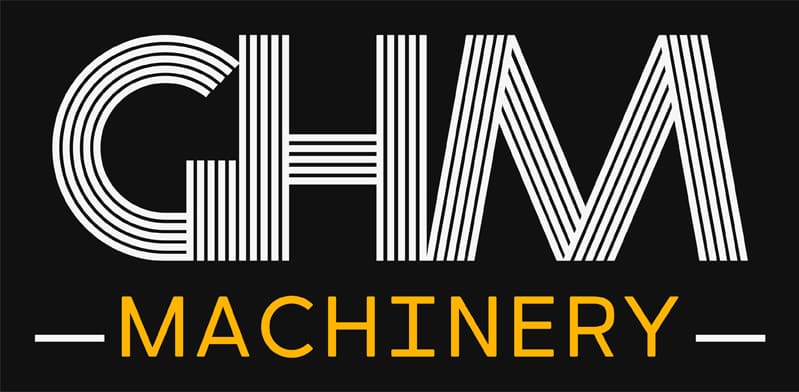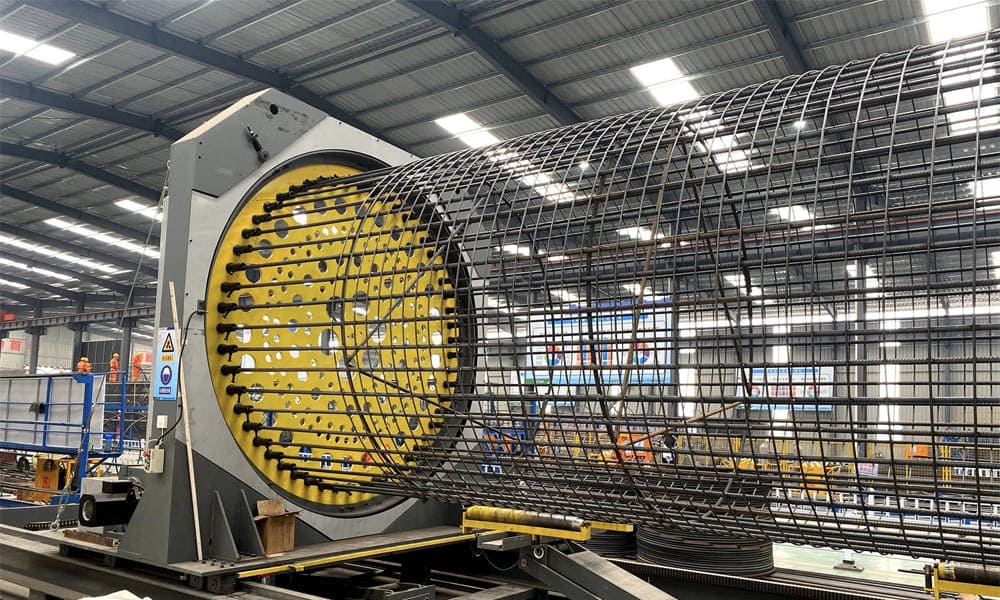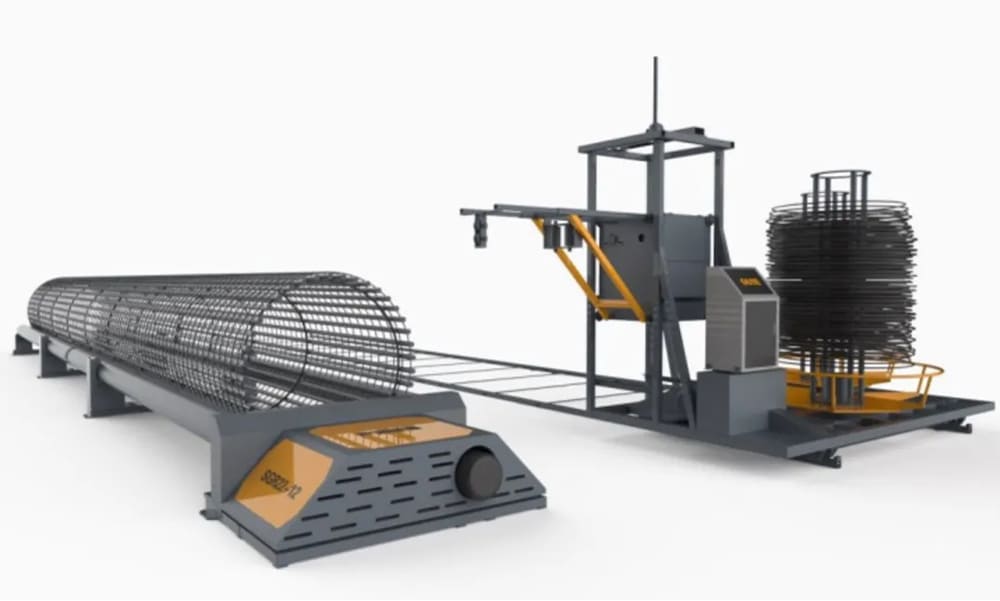GHM Machinery’s steel cage winding machine represents a significant advancement in the production of steel cages, providing a more efficient and standardized alternative to manual binding. Below is a detailed description of the use process and the key features of the steel cage winding machine:
Use Process
- Setup and Preparation:
- Positioning: Place the machine in a designated area with adequate space for operation.
- Material Placement: Load the steel bars onto the feeding mechanism of the machine.
- Power Connection: Ensure the machine is connected to the appropriate power source and turned on.
- Programming and Configuration:
- PLC Control Setup: Use the touch screen interface to set the desired parameters, such as welding speed, spacing, and number of windings.
- Diameter Adjustment: Adjust the machine settings to match the required diameter of the steel cage, which can range from 0.3 meters to 5 meters.
- Parameter Storage: Save the programmed settings if repetitive production is required, taking advantage of the machine’s data storage capabilities.
- Operation:
- Feeding Steel Bars: Feed the steel bars into the machine. The machine’s feeding mechanism ensures that the bars are correctly positioned for winding.
- Automatic Winding and Welding: Start the machine. The PLC control system will guide the automatic winding and welding process. The machine will form and weld the steel bars into a cage structure according to the preset parameters.
- Monitoring: Continuously monitor the process via the touch screen interface to ensure everything is functioning as intended. Adjust settings if necessary without stopping the machine.
- Completion:
- Finishing: Once the steel cage is formed and welded, the machine will automatically stop.
- Unloading: Remove the finished steel cage from the machine and transport it to the next stage of the construction process or storage.
- Quality Check: Inspect the finished steel cage for consistency and quality. Ensure that the spacing and welding meet the specified standards.
Key Features
- Automation and Efficiency:
- PLC Digital Control: Enables precise control over the entire winding and welding process, allowing for adjustable speed, spacing, and winding count.
- Single-Person Operation: The machine is designed to be operated by one person, significantly reducing labor requirements and increasing efficiency.
- High Production Speed: Capable of producing steel cages faster than manual methods, enhancing overall productivity.
- Versatility:
- Variable Diameter Capability: Can produce steel cages with diameters ranging from 0.3 meters to 5 meters, making it suitable for various construction needs.
- Adjustable Settings: Easily adjust welding speed, spacing, and winding parameters through the touch screen interface, offering flexibility in production.
- Cost Savings:
- Labor Reduction: Saves the labor of 3-8 workers by automating the steel cage production process.
- Material Savings: Optimizes the use of raw materials, reducing waste and cutting down on costs.
- Quality and Consistency:
- Uniform Product Quality: Ensures consistent spacing and secure welding, producing high-quality steel cages that meet construction standards.
- Stable Operation: The use of imported PLC and touch screen systems ensures reliable and durable performance.
- Safety and Ease of Use:
- User-Friendly Interface: The touch screen and PLC controls are designed for ease of use, making it accessible even for operators with minimal training.
- Safety Features: Equipped with safety mechanisms to prevent accidents during operation.
Conclusion
GHM Machinery’s steel cage winding machine is a cutting-edge solution for the production of steel cages, combining automation, precision, and efficiency. By replacing manual binding with this advanced equipment, construction projects can benefit from higher productivity, lower labor costs, and superior quality control. The machine’s user-friendly design and versatile capabilities make it an essential tool for modern construction practices.



